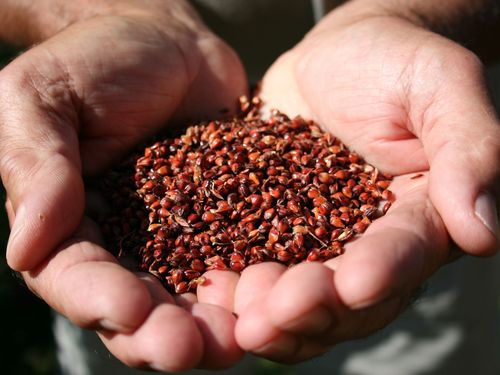Historical and Decorative Painting Techniques Using Traditional Materials
Traditional craftsmanship throughout Austria, inscribed 2021
The history of historical and decorative painting techniques using traditional materials reaches back to the era of cave painting, and the associated knowledge and skills are still practiced today. Producing and using the various materials and tools necessary for the execution of techniques involving lime, stencils, and sgraffito, together with appropriate choices in terms of colours and creative language, requires intensive training and a high degree of crafting skill.
These techniques’ origins date back almost 45,000 years, to the era of cave painting; the initial techniques were refined in ancient times by Greek and Roman craftspeople in particular in the form of fresco painting or painting on dry surfaces using distemper. They form a basis for the variety of painting techniques which led to the emergence of diverse types of painting professions during the Middle Ages (glass, wall, and wood painting, etc.). The skills already applied in those days in the creation of lime-based products (fresco, secco, stucco, and lime pressing), combing or rolling techniques, as well as lining, dabbing, wrapping, rolling, or imitation techniques, such as graining and marbling, are practiced to this day and are referred to collectively as historic and decorative painting techniques.
Knowledge about the production of materials, such as pigments, fillers, and binders, along with the appropriate application thereof, goes hand in hand with the painters’ use of these techniques. A high level of experience and knowledge are required of the painter when choosing the correct paint to suit the background and achieving the desired effect. This knowledge is not only applied to the creation of new works but also to the preservation of historic architectural substance. Knowledge of this complex practice is acquired, in part, through apprenticeships but above all by means of observation and many years of experience.
Alongside the craft itself, collective rituals and festivities, such as for the Feast of Saint Luke on 18 October (in honour of the profession’s patron saint) and the ceremonial release of graduating apprentices from their status as part of the fair on Saint Rupert’s Day, contribute to this community’s collective identity. Great effort is devoted to fostering young craftspeople during their apprenticeships in the interest of safeguarding these traditional crafting techniques. In addition, training programmes offered by the federal guild, intercompany exchange programmes, and further training all contribute to the passing on and safeguarding of knowledge.
Contact
Downloads
- Application form (in German only) 3 MB (pdf)
- Letter of Support (in German only) 236 KB (pdf)
- Expertise (in German only) Feiglstorfer 450 KB (pdf)
- Expertise (in German only) Huber-Reichel 504 KB (pdf)

![[Translate to EN:] Historische und dekorative Malerhandwerkstechniken mit traditionellen Materialien](/fileadmin/Redaktion/Kultur/IKE/IKE-DB/images/Historische_Malertechnicken_I.jpg)
![[Translate to EN:] © J. Ségur/ZED, with the permission of UNESCO](/fileadmin/_processed_/d/b/csm_Convention-2003-IKE_0832a6a47d.jpg)
![[Translate to EN:] © ÖUK](/fileadmin/_processed_/3/9/csm_P1011318_7eac86402f.jpg)

![[Translate to EN:] © Weitblickfilm](/fileadmin/_processed_/9/8/csm_Workshop_17_2dee1e1fd8.jpg)